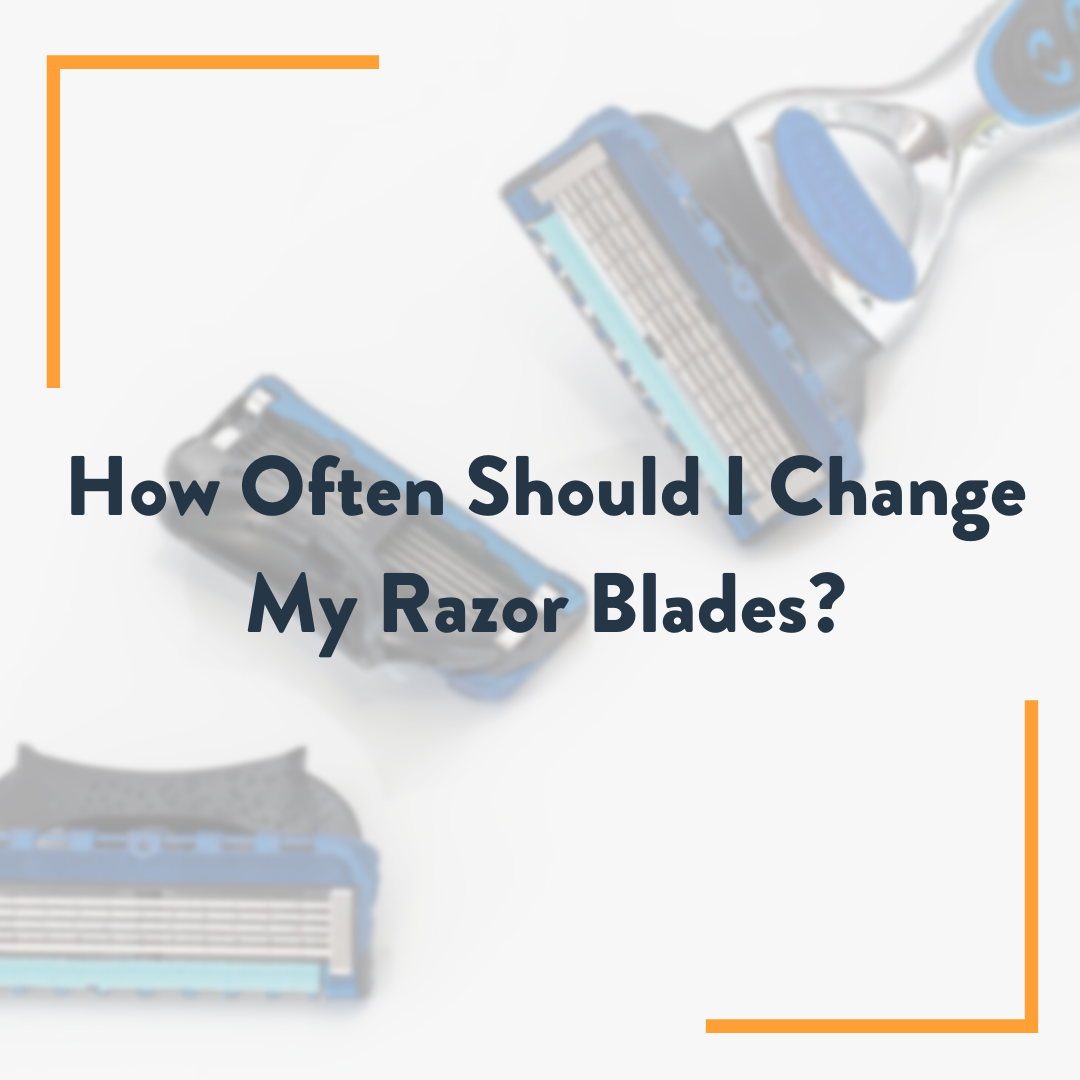Just got a new razor and aren't sure when you should replace the blade?
Or maybe you've noticed that the blade isn't performing as well as it did when you first got it.
Well, question no more! Here are some guidelines to help you figure out how often you should change your razor blade before it irritates or damages your skin!
Or maybe you've noticed that the blade isn't performing as well as it did when you first got it.
Well, question no more! Here are some guidelines to help you figure out how often you should change your razor blade before it irritates or damages your skin!
QUALITY OF BLADES

The quality of the blade definitely has a role in determining how frequently you should be changing your blades. The higher the quality of the blades, the longer you can use them before changing the blade. The lower the quality, the more often you should be switching them out. That being said, buying cheaper blades only works to your benefit in the short run. Basically, you get what you pay for.
For instance, our handcrafted razors are compatible with either the Gillette Fusion or Mach3 disposable razor systems. Gillette is definitely one of the more high quality razors, providing an easy and comfortable shave thanks to their specialized blades. These blades last a lot longer - and provides a closer shave - than the disposable blades you'd find in your hotel room.
HAIR THICKNESS AND DENSITY

The thickness, density, and texture of your hair also affects the lifespan of your razor blades. Generally, the thicker and denser your hair is, the faster your blade will wear out and will need replacing. If you feel like you’re dragging your razor across your face - instead of the blade smoothly gliding - then it is definitely time to switch out the blades.
Shaving with wet hair also helps prolong the life of your razor blades - like showering or applying a wet compress before shaving. This also helps soften your skin and hair and reduces the friction on the razor blades - making it easier to cut. The softer your hair, the more easily the razor glides, and the longer it will take for the blades to become dull.
The more surface area you’re shaving, the faster your razor blades will wear out. If you’re shaving your face, your chest, your arm, or anything else, it is important to use designated razors (especially separate from the razor you would use for your face) for each body part. In this case, if you find that your hair tends to be more thicker and coarse, you might want to opt for the Gillette Fusion than the Mach 3, which feature more blades.
WHEN TO REPLACE YOUR BLADE

According to the American Academy of Dermatologists (2018), rule of thumb is that you would typically replace your disposable blades every five to seven times - if not sooner. After each shave, the edge of your razor becomes slightly duller, resulting in a less closer shave after each use.
When the gel strips on your razor appear dried up or spotty, this is one of the first signs that your blades are worn out. These gel strips work as lubricants, allowing the blade to keep consistent contact with your skin and allowing the razor to glide easily over your skin. With this in mind, there are a few things to consider when determining how often you should replace your razor blades.
Here are some other indicators that it's time to replace your blades:
- Your skin feels irritated after shaving
- You find patchy areas or missing spots after shaving
- Your razor begins to look and feel dull
- You feel that your hairs are getting pulled instead of cut as you shave (or the feeling that you have to drag the blades across your skin, rather than an effortless glide)
- The debris in between the blades can no longer be washed away
HOW TO MAINTAIN YOUR RAZOR

How well you maintain your razor and how you shave is an important factor that could affect how often you should be replacing your razor blade. Here are some steps to include in your shaving routine, to keep your blade lasting longer:
- Upon shaving, thoroughly lubricate the surface of your skin with a shaving gel, soap, cream, or foam. This provides less resistance as the blade glides through your skin, meaning the sharp edge of your blade won’t dull as quickly. (Being generous with the coating would also help with razor burns.)
- Rinse the blades after each swipe when you shave helps prevent buildup and dead skin cells between blades.
- When you’re done shaving, you would want to thoroughly rinse your razor. Wash it with an antibacterial soap, rinse again with hot water, and then allow your razor to air dry completely before putting it away. (If you neglect to clean your razor between each shave, bacteria and debris will begin to build up between the blades and can quickly dull them.)
- Lastly, Store your razor in a dry area—not a sink or shower—to prevent rust from forming and to prolong the life of the razor blades.
Hopefully, these pointers will help you get the most from your blades!
Keep in mind that if you don't clean your razors after each shave, bacteria can quickly develop on a razor, and if you nick yourself while shaving, your cut is more likely to become infected.

1 comment
I love this Blog ❤️! I’m always taking the time to read the great tips and insights. Thank you for sharing, and keep up the amazing work!